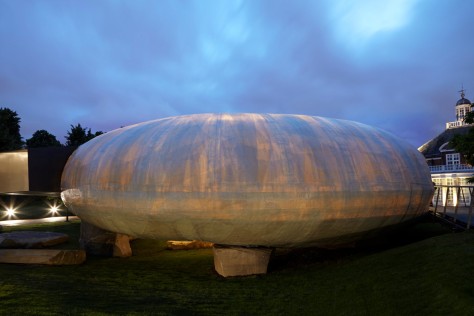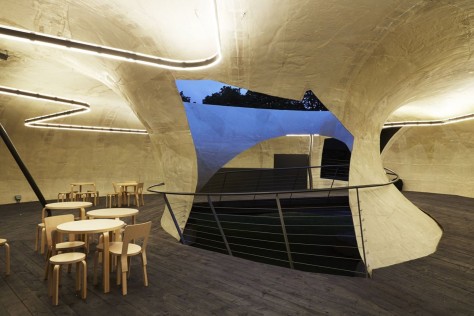
The Serpentine Pavilion 2014 continues a history of small romantic constructions seen in parks or large gardens, the so-called follies that were popular from the late sixteenth century to the beginning of the nineteenth century.

In general, follies appear as ruins or have been worn away by time, displaying an extravagant, surprising and often archaic form. These characteristics artificially dissolve the temporal and physical limits of the constructions into their natural surroundings.

The 2014 Pavilion takes these principals and applies them using a contemporary architectural language. The unusual shape and sensual qualities of the Pavilion have a strong physical impact on the visitor, especially juxtaposed with the classical architecture of the Serpentine Gallery.

From the outside, visitors see a fragile shell in the shape of a hoop suspended on large quarry stones.

Appearing as if they had always been part of the landscape, these stones are used as supports, giving the Pavilion both a physical weight and an outer structure characterised by lightness and fragility.

The shell, which is white, translucent and made of fibreglass, contains an interior that is organised around an empty patio at ground level, creating the sensation that the entire volume is floating.

The simultaneously enclosed and open volumes of the structure explore the relationship between the surrounding Kensington Gardens and the interior of the Pavilion.

The floor is grey wooden decking, as if the interior were a terrace rather than a protected interior space. At night, the semi-transparency of the shell, together with a soft amber-tinted light, draws the attention of passers-by like lamps attracting moths. Source by Smiljan Radić.

